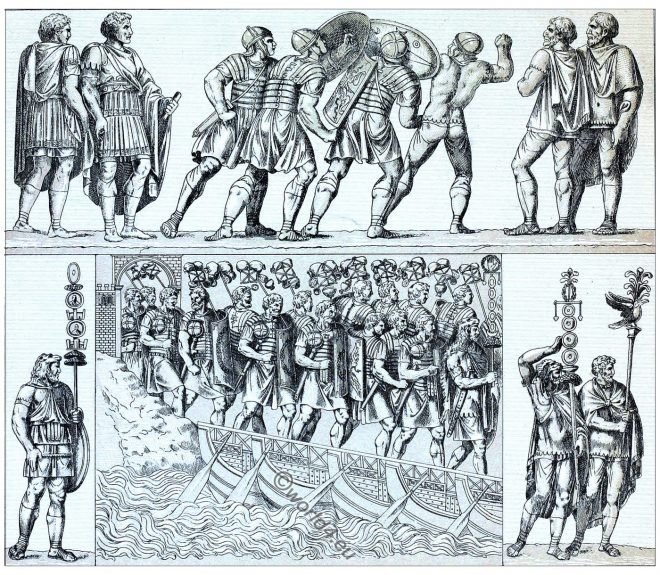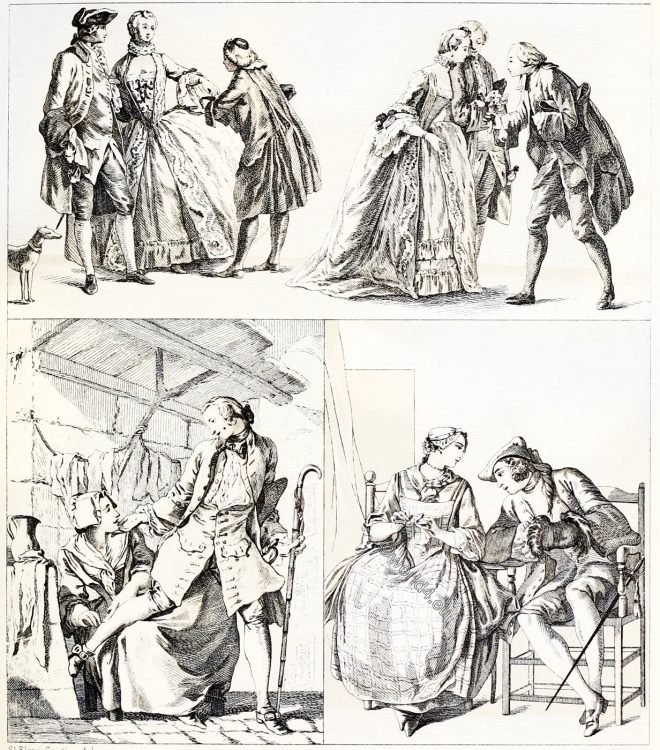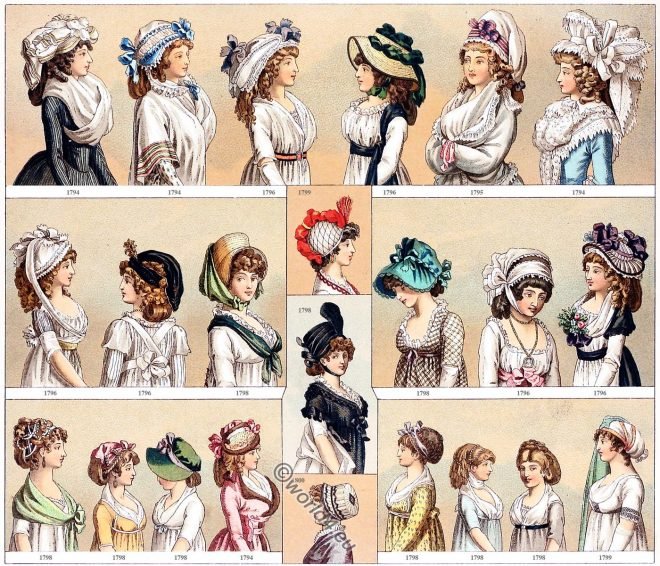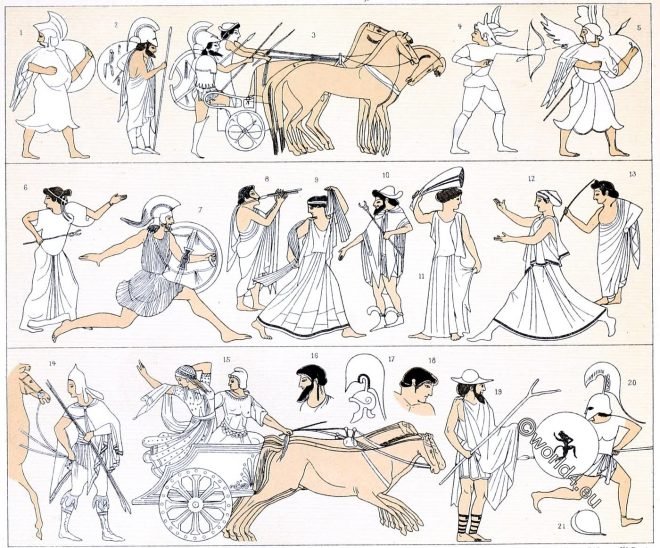Armament of the Middle Ages in France. Ring armour. Chain mail. War costumes from the 9th to 13th century.
Tag: Auguste Racinet
The Costume History in Chronological Development by Auguste Racinet. Edited by Adolf Rosenberg. Berlin 1888.
The Roman army. The legionary soldier. Equipment, assault weapons.
The Roman army. The legionary soldier. The complete equipment of the legionaries. The assault weapons. Military of the Ancient World.
Mughal Emperor Humayun in the usual court attire of an audience.
Mughal Emperor Nasir ud din Muhammad Humayun in the usual court attire of an audience. Mogul lady in a house costume. Farrukhsiyar, grandson of Grand Mogul Aurangzeb. Farrukhsiyar 10th Grand Mogul of India.
France. The elegant world of rococo in the 18th century.
The elegant world in the 18th century. Women of the people. Officer of the royal house. Stocking and lace maker. (1735-1755).
Greek-Roman furniture. Throne chair, Bisellium, Sella castrensis.
Various seating furniture and its use from the Greek-Roman history. Suppedaneum, Throne chair, Bisellium, Klismos, Diphros, Sella castrensis
Goldsmiths’ work and jewelry by Gilles L’Egaré. France 18th century.
Some of the clasps, called châtelaines, with which this plate is filled, belong to the style which was in fashion from 1719 to 1745
Greek-Roman art. Mosaics, painted bas-reliefs and wall paintings.
Greek-Roman art. Mosaics, painted bas-reliefs and wall paintings found in Herculaneum and Pompeii. Ornaments from panels, friezes, borders and mural paintings.
Female costumes and fashion from 1794 to 1800. France 18th century.
The comfortable costume, in which the belt was attached at a normal height, was soon followed by the close-fitting dress, the robe collante
Byzantine Art. Mural, paintings, mosaics, and paintings from manuscripts.
Marginal paintings. Paintings in St. Sophia. Mosaics from Palermo. Enameled border. Paintings at Constantinople.
The Etruscans. Culture, costumes, warriors in Etruria.
The Etruscans were an ancient people in Etruria, who lived in northern central Italy. The Etruscan culture can be traced in this area between 800 B.C. and the second half of the 1st century B.C.










